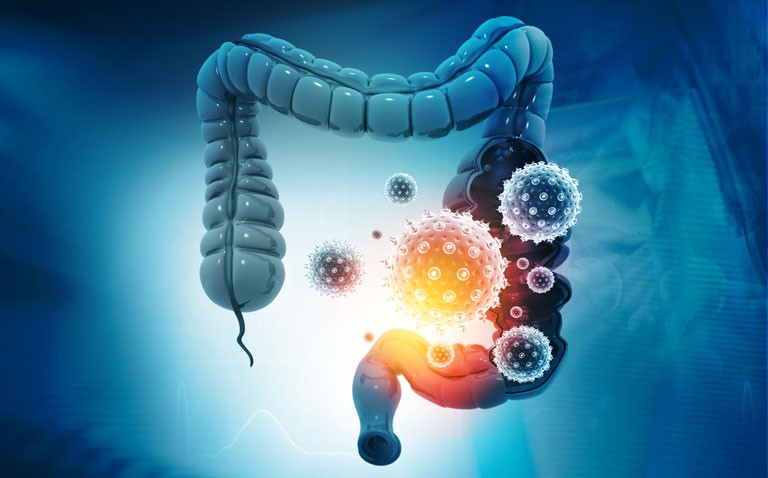Although both fatigue and muscle weakness can continue after infection with COVID-19, much less is known about the development of enteric symptoms.
For some patients, enteric symptoms are the only observable effects of infection with COVID-19. This is perhaps not surprising given that the ACE 2 receptor, to which the virus binds to enter cells, has been identified in gastrointestinal epithelial cells coupled with the fact that the virus has been isolated from faecal samples. But does this mean that patients would continue to experience gastrointestinal symptoms after an acute infection? This was the question posed in an analysis by a team from the Guangdong Institute of Gastroenterology, Guangzhou, China. The team examined patients from the Hubei and Guangdong provinces of China who had been hospitalised with the virus between January and March 2020. The researchers examined the prevalence and range of gastrointestinal (GI) symptoms reported after a 90-day follow-up telephone interview and tried to link this to disease severity upon hospitalisation or the subset of reported symptoms. The researchers defined GI sequelae as symptoms that presented after discharge but which were absent within the month before the onset of infection.
Findings
In total, 117 patients who had been hospitalised with COVID-19 were included in the follow-up study. Overall, nearly half (45.3%) patients were aged 60 years and over (44.4% female) and the most common co-morbidity (23.9%) was hypertension. The most common symptom upon admission was fever (69.3%) with just over a quarter of patients (28.2%) described as seriously ill. GI symptoms upon admission were recorded in 13% of patients but 42% developed GI symptoms while in hospital. At the follow-up interview 3 months later, 52 (44%) patients reported GI symptoms. Among these, 15 had GI symptoms upon admission, 34 developed symptoms during hospitalisation and 3 subsequently developed their symptoms. Symptoms reported included loss of appetite (24%), nausea (18%), acid reflux (18%) and diarrhoea (15%). Interestingly, in the patients who reported GI sequelae at the follow-up interview, a higher proportion initially presented with dyspnoea and myalgia but were generally reported to be less severely ill.
In a discussion of their findings, the researchers noted how persistence of GI symptoms had implications for subsequent patient management and called for prospective studies to better understand the long-term GI impact of COVID-19.
Citation
Weng J et al. Gastrointestinal sequelae 90 days after discharge for COVID-19. Lancet Gastroenterol Hepatol 2021 https://doi.org/10.1016/ S2468-1253(21)00076-5










